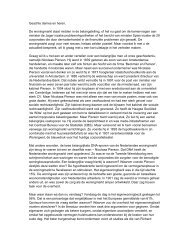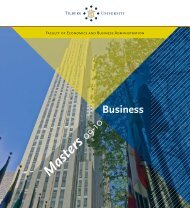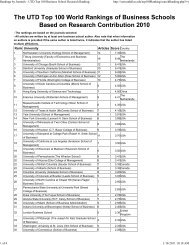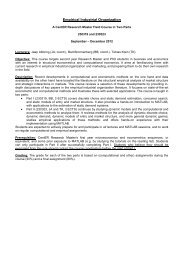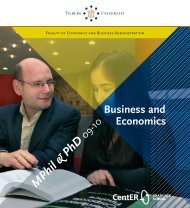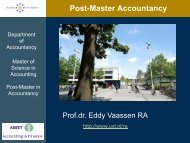Predicting the past - Tilburg University, The Netherlands
Predicting the past - Tilburg University, The Netherlands
Predicting the past - Tilburg University, The Netherlands
You also want an ePaper? Increase the reach of your titles
YUMPU automatically turns print PDFs into web optimized ePapers that Google loves.
I have made this recommendation repeatedly, but as yet no econometric journal requires<br />
it and few authors take <strong>the</strong> trouble and <strong>the</strong> time to do it. In my view, we all should.<br />
National accounts estimation<br />
I believe it was Rick van der Ploeg who brought Jan van Tongeren and me toge<strong>the</strong>r, around<br />
1997. At <strong>the</strong> time, Jan was head of <strong>the</strong> Statistics Division at <strong>the</strong> United Nations in New<br />
York, and a world expert on national accounting, a subject I knew very little about.<br />
Our common interest was (and is) based on <strong>the</strong> fact that data do not simply fall to Earth<br />
like manna falls from Heaven. Instead, data are constructed by some agency like Statistics<br />
Ne<strong>the</strong>rlands or <strong>the</strong> United Nations Statistical Division. Applied economists seldom see<br />
‘raw’ data. <strong>The</strong> data that <strong>the</strong>y receive as <strong>the</strong>ir starting point have already gone through a<br />
process. This process could involve imputing missing values or balancing items coming<br />
from different sources. <strong>The</strong> researcher should of course be aware of <strong>the</strong>se facts, but very<br />
often he or she isn’t. This shows a disrespect for <strong>the</strong> data, which in my view is only too<br />
common in econometrics.<br />
Jan and I worked toge<strong>the</strong>r for more than ten years on establishing new frameworks for<br />
national accounts estimation. In <strong>the</strong>se frameworks, <strong>the</strong> data are <strong>the</strong> parameters that we<br />
need to estimate. But we know something about <strong>the</strong>se data. For example, we know <strong>the</strong>ir<br />
approximate values in previous years and we know bounds for many ratios of <strong>the</strong> data.<br />
All this information can serve as priors in a Bayesian set-up. This is where Aart de Vos,<br />
my Bayesian friend, enters. Later, Dmitry Danilov also became a partner in this team, as<br />
master programmer.<br />
In this ambitious project we developed a new <strong>the</strong>oretical Bayesian framework for national<br />
accounts estimation, and also <strong>the</strong> software required to estimate very large data sets. Jan<br />
successfully applied <strong>the</strong>se ideas in various countries, and obtained his PhD (after retiring<br />
from <strong>the</strong> United Nations) based on <strong>the</strong>se studies.<br />
<strong>Predicting</strong> <strong>the</strong> <strong>past</strong> 19




